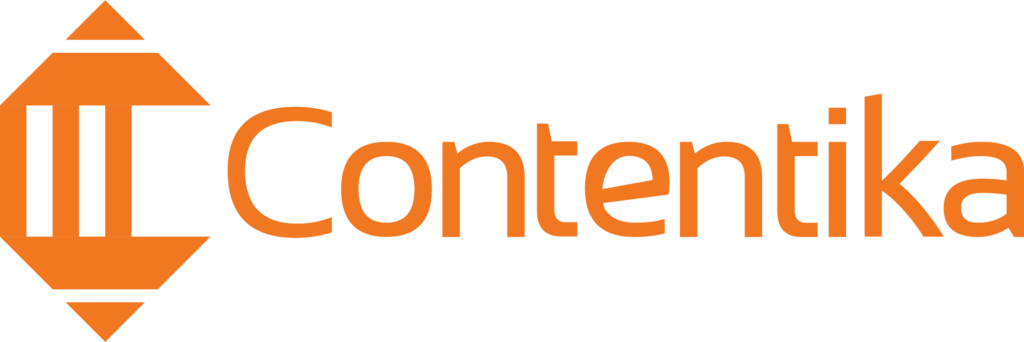A successful content marketing strategy is essential to staying ahead of the competition and capturing the attention of potential customers. Content development plays a major role in helping businesses achieve their goals and build trust with their users.
It’s more than just creating content—it’s about developing valuable and relevant content that speaks to your target audience, engages readers, and encourages interaction.
But it’s important to keep in mind that creating successful content isn’t as simple as throwing together some words on a page. To truly unlock the full potential of your content strategy, you need to invest time and effort into developing high-quality pieces that are both informative and enjoyable for your audience.
In this blog post, we’ll explore how effective content development can set your business apart from the competition and provide value for everyone involved.
What is Content Development?
Content development is the process of creating and refining content to suit your business’s needs. It involves researching, planning, writing, editing, proofreading, formatting, and publishing content for a variety of platforms, including websites, blogs, newsletters, and social media.
Content development is an integral part of content marketing and allows you to create content that will help you achieve your goals. It is important to have a well-defined content plan that will help you identify the type of content, topics, and tone of voice you want to use. It is also important
The right content development strategy can help you reach more customers, build trust with them, and ensure they keep coming back for more. With well-crafted content, you can establish yourself as an industry leader and drive results through better brand visibility and higher engagement levels from your customers.
Importance of Content Development
The objective of content development is to get your message across in a way that resonates with readers as well as search engines. Here are five key reasons why investing in content development can give your business the boost it needs:
- Reach More Audiences: Content creation is an essential tool to build trust and credibility with potential customers. When you produce helpful pieces focusing on industry trends or customer pain points, you’re showing your audience that you understand their needs. High-quality content can also increase the chances of others sharing your material and amplifying your reach.
- Boost SEO: Content development is an essential part of any successful SEO strategy. Quality content makes it easier for search engines to crawl, index, and rank pages on a website. It’s also crucial for building backlinks that help boost rankings in search result pages (SERPs).
Creating helpful pieces can help you get more eyeballs on your site and attract organic traffic from those searching with relevant keywords.
- Improve Engagement: Content can be used to engage potential customers and keep them coming back for more. Whether it’s blog posts, videos, or podcasts, engaging content keeps readers interested and encourages them to interact with your brand. You can use content development to create dynamic pieces that show customers how your products or services can meet their needs.
- Increase Brand Awareness: Content can be used to build relationships with potential customers. Through informative, entertaining, and relevant pieces, you’re able to establish yourself as an expert in the industry, improving visibility and strengthening customer loyalty. A strong content strategy helps customers recognize and remember your brand over time.
- Generate Leads: Quality content helps nurture leads by providing useful information that moves prospects through the sales funnel. It also helps attract visitors who are searching for solutions related to your business. When done right, content creation acts as a powerful tool to drive conversions and boost sales.
Strategies for Optimizing Your Content Development Process
1. Set Content Goals
Content goals are key to successful content development. They help ensure the content you create is relevant and meets the needs of your target audience.
When setting content goals, consider what type of writing will be most effective for your brand’s message and who your target audience is. It’s important to set clear objectives that can be measured so you can assess how well your content performs over time.
For example, if you want to increase traffic or generate leads, set a goal to boost website visits or conversions by 10%. To achieve this, create unique blog post topics and optimize them for SEO, use eye-catching visuals, and produce helpful videos that viewers can relate to.
Additionally, adding educational webinars or podcasts could also pique interest while helping potential customers better understand your product or services. Establishing and understanding what success looks like for each of your content goals will help you better track progress over time.
2. Identify Your Target Audience
Developing content without first establishing a target audience can be like shooting arrows in the dark. Before drafting your content, it’s essential to identify your target audience and understand their likes, interests, goals, and needs.
When you are creating content with a specific audience in mind, it becomes easier to tailor your message and create effective content that resonates with them.
For example, if you want to effectively reach Generation Z or millennials for an app promotion campaign, create fun and relatable content. Use popular trends among younger age groups, such as gaming references or influencer mentions, to better engage this demographic.
But if you are targeting parents of school-age children for a family life skills course, then you should create content that is educational and informative in order to appeal to this particular audience.
No matter who your target audience is, make sure your content speaks specifically to them. Know the language they use and the topics they enjoy so that your efforts are not wasted, but instead welcomed!
Take the time to research what will engage them and tailor your message accordingly. It may take a little extra effort upfront, but it will pay off down the line in terms of better engagement and higher conversions.
3. Analyze Your Competition
One of the most important things to do during content development is to analyze your competition. This doesn’t just mean looking at their website and seeing what kind of posts they are producing; it means going a step further and understanding why their content works so well for them—or why it doesn’t.
Only by understanding what your competitors are doing can you truly maximize the potential of your own content.
One way to do this is to look beyond the written content and into the visuals. How does each competitor use images, videos, and other visuals in their content? What kinds of topics and formats get the most engagement? Are there any commonalities among successful pieces?
Analyzing how each competitor utilizes visual elements helps you get a better understanding of how to create powerful visuals for your own content.
Another way to understand the competition is to look at their keywords and topics. What terms are they targeting? What kind of language do they use when writing titles, descriptions, and headlines? Are there any trends in the types of topics they’re focusing on? By going through their content, you’ll get an idea of what types of topics resonate with their target audience—and which ones don’t.
Studying the competition helps gain actionable insights into what types of content work best for your audience—and which ones don’t. Ultimately, this will help you develop a more effective content development plan and unlock the full potential of your content. So take the time to analyze your competitors and create an effective strategy that works for you.
4. Blog Topic Analysis and Keyword Research
To optimize your content development process, it’s important to conduct thoughtful analysis of blog topics and keyword research.
Blog topic analysis involves examining what types of topics are trending within your industry, or related industries, as well as identifying potential gaps in the market for you to fill through meaningful content creation.
Utilizing a range of tools such as Buzzsumo, SEMrush, or Ahrefs can help you identify influential blogs within your space and gain valuable insights into what topics are popular in terms of search volume and engagement rates.
Once you’ve identified promising topics, you’ll be able to determine whether they could benefit your business and if there is an opportunity for you to create content around them.
Keyword research is the practice of identifying words and phrases that are commonly searched by your target audience in relation to a specific topic. It is important to conduct keyword research as it will help you understand what topics have potential, where gaps are available, and how competitive a space is.
You can use tools such as Google Keyword Planner or Ubersuggest to identify relevant keywords that align with the topics you plan to write about. The data gathered from these tools will allow you to identify high volume search terms and low competition keywords, both of which should be taken into consideration when crafting attractive titles for blog posts.
By taking the time to do blog topic analysis and keyword research, you’ll be able to create content that resonates with your audience and positively impacts the growth of your business. It is an essential part of any content development process and should not be overlooked.
With these practices in place, you will have the information required to craft compelling topics and develop engaging content that captures attention, drives engagement, and increases conversions.
5. Creating a Content Editorial Calendar
Content calendars are essential tools when it comes to developing content. They help you plan out the topics you want to focus on, set deadlines for completion, and make sure that everything is organized and in line with your overall business strategy.
A content calendar can be anything from a simple spreadsheet detailing the dates, titles, authors, and other relevant information about each piece of content to a more complex program that allows for collaboration between multiple parties and keeps track of analytics and performance metrics.
Creating a content calendar takes time, but once done, it should be reviewed regularly to ensure that all goals are being met.
Start by mapping out the different channels you are targeting—such as website pages, social media posts, or podcasts—and then assigning due dates for each type of content. As you go, make sure to include any specific keywords or topics that need to be included in the content piece, and make sure that each post has a clear purpose and goal.
Once all of this is done, you’ll also want to set up parameters for the feedback and review processes so everyone involved is on the same page.
This could include setting deadlines for reviews, assigning roles to editors, and making sure that there are ways to monitor the analytics for each piece of content. This will help ensure that your efforts are producing tangible results while providing valuable insight into the effectiveness of each post or article.
6. Writing
Writing your content is the part of the process where you can really make a difference in how successful it turns out. After all the research, planning, and strategizing, it’s up to you to take that knowledge and craft compelling copy. Here are some tips for writing great content:
Start With a Memorable Headline
Your headline should be creative, memorable, and informative so that it stands out from the competition and grabs readers’ attention immediately. Use strong keywords, but don’t forget about emotional appeal; if your headline evokes an emotion like curiosity or surprise, people will be more likely to click on it.
Write to Your Target Audience
Think carefully about who you want to reach with your content and write for that specific person. What do they need to know? What language will resonate with them? Keeping your buyer persona in mind when you’re writing is a great way to ensure your content speaks directly to the people who would be interested in it.
Stay Focused
It’s important to remember that you should always have one central focus or argument in your content; any tangents should be related back to this main theme. If there are too many ideas or topics within your article, it can become confusing and overwhelming for the reader.
Add Depth to Your Content
The more knowledge and experience you bring to the table, the more likely readers are to find value in what you have written. Showcase why you are an expert in the field and try to offer something new or unique; readers should finish your content feeling enlightened rather than exhausted.
Include a Call to Action
You don’t want your visitors to just read and leave; you need them to take action after reading your article. Whether that’s signing up for a newsletter, downloading a free resource, leaving a comment, or engaging with you on social media, make sure you give them an opportunity to engage further.
Take Breaks
Writing can be hard work, so make sure to build regular breaks into your workflow. If you find yourself struggling for ideas or the words aren’t flowing, take some time away from it and come back refreshed and ready to write. A short break can make all the difference when it comes to creating compelling content.
By following these simple tips and strategies, you’ll be well on your way to developing great content that resonates with your target audience and achieves your goals.
7. Optimize for SEO
Optimizing your content for SEO is a key step in the content development process. Search engine optimization (SEO) is the practice of making sure your website and its content appear near the top of search results, thus increasing visibility and driving more traffic to your site.
This can be done by using specific keywords related to relevant topics and optimizing titles, meta descriptions, image alt text, headings, etc. Additionally, regularly updating existing pages with new information will ensure that your content stays fresh and up-to-date.
When creating content for SEO purposes, make sure you are including relevant keywords throughout the body copy as well as keeping it concise yet informative at the same time. Additionally, utilizing header tags such as H1-H6 is a great way to indicate what topics or sections are important in your content and will help search engines understand the structure of your page.
Moreover, it is also essential to create internal links within your site that allow users to easily navigate around different pages on the same topic. This will not only improve user experience but can also boost SEO ranking as well. Lastly, optimizing meta descriptions with relevant keywords and calls-to-action will ensure that users click through and visit your website.
By following these tips, you’ll be able to optimize your content development process while effectively improving its visibility within search engines. This will enable your website to reach more potential readers and customers, thus increasing its overall value.
8. Publish, Distribute and Promote Your Content
Publishing, distributing, and promoting your content is critical to the content development process. It’s also one of the most important steps, as it takes your carefully crafted content and puts it into the hands of customers and potential customers.
There are several ways to do this: through social media channels, email newsletters, blogs, press releases, influencer outreach campaigns – the list goes on. However you choose to share your content, make sure that you maximize reach by using a variety of distribution methods and platforms.
For example, if you’ve just written an informative article about a new product launch, consider sharing it on Twitter with a link back to where readers can purchase the product. You could also create a press release about the launch, targeting key media outlets in your niche.
You could also look for influencers that are already talking about your product and reach out to them with a personalized message asking if they would be interested in learning more.
9. Track the Content Performance
Tracking your content’s performance is essential for understanding its impact on your audience and optimizing it. To effectively track its performance, you need to have a system in place that allows you to measure key metrics such as clicks, engagement, and conversions. By tracking these metrics regularly, you can identify areas for improvement or success and optimize your content accordingly.
For instance, if one of your articles is performing well but the time spent on page is low, it may be an indicator that there are opportunities to make the article more engaging by adding visuals or breaking up long chunks of text into shorter paragraphs with headings.
Similarly, if a particular piece of content has high click-through rates but no conversion, it could indicate that there needs to be more information or a call-to-action to incentivize readers to take the next step.
Another way to track your content’s performance is by using analytics tools such as Google Analytics, which provide an in-depth overview of user behavior and engagement.
This can help you see how users interact with your content, where they’re coming from, and what pages they’re visiting before leaving. It also helps in understanding which channels are driving the most traffic so that you can adjust your strategy accordingly.
Finally, if you have access to customer data (such as emails, surveys, etc.), you can use this to gain valuable insights into the preferences and interests of your target audience so that you can tailor future content to better meet their needs.
Combined, all of these tools can provide you with valuable information on the performance of your content and help you make informed decisions that will unlock its potential. By tracking the performance of your content regularly, you will not only improve its effectiveness but also get a more complete picture of how your audience is responding to it.
FAQs
Content development is a skill set that encompasses the ability to create, improve, and modify digital content in order to achieve specific business objectives. It requires an understanding of how customers interact with your organization’s content and how they use it to make decisions. Content developers must have the capacity to write, design, craft stories, analyze customer data, and find insights from customer feedback.
Content development is about creating content that resonates with your audience, informs them about your brand and products, and drives conversions. It involves researching the latest trends in your industry to ensure you create timely and relevant content, as well as developing strategies for producing high-quality content that will engage readers and help your business reach its goals.
Yes, content development is an essential part of any successful marketing strategy. Content development involves creating effective and engaging content that resonates with your target audience, communicating it in a way that drives traffic to your business, and optimizing content to ensure you’re getting the most out of it.
Conclusion
Content development is an essential aspect of any successful business, brand, or marketing campaign. By developing your content with a keen eye for detail and understanding the needs of your target audience, you can create valuable content that will provide value to those who read it.
Additionally, optimizing your content so that it appeals to search engines and is properly linked within social media circles ensures maximum exposure for your message.
Developing quality content is essential to unlocking the full potential of your business or campaign and maximizing its results. With the right resources and attention to detail, creating powerful and effective content doesn’t have to be difficult. It can be an incredible journey for unlocking growth opportunities!











